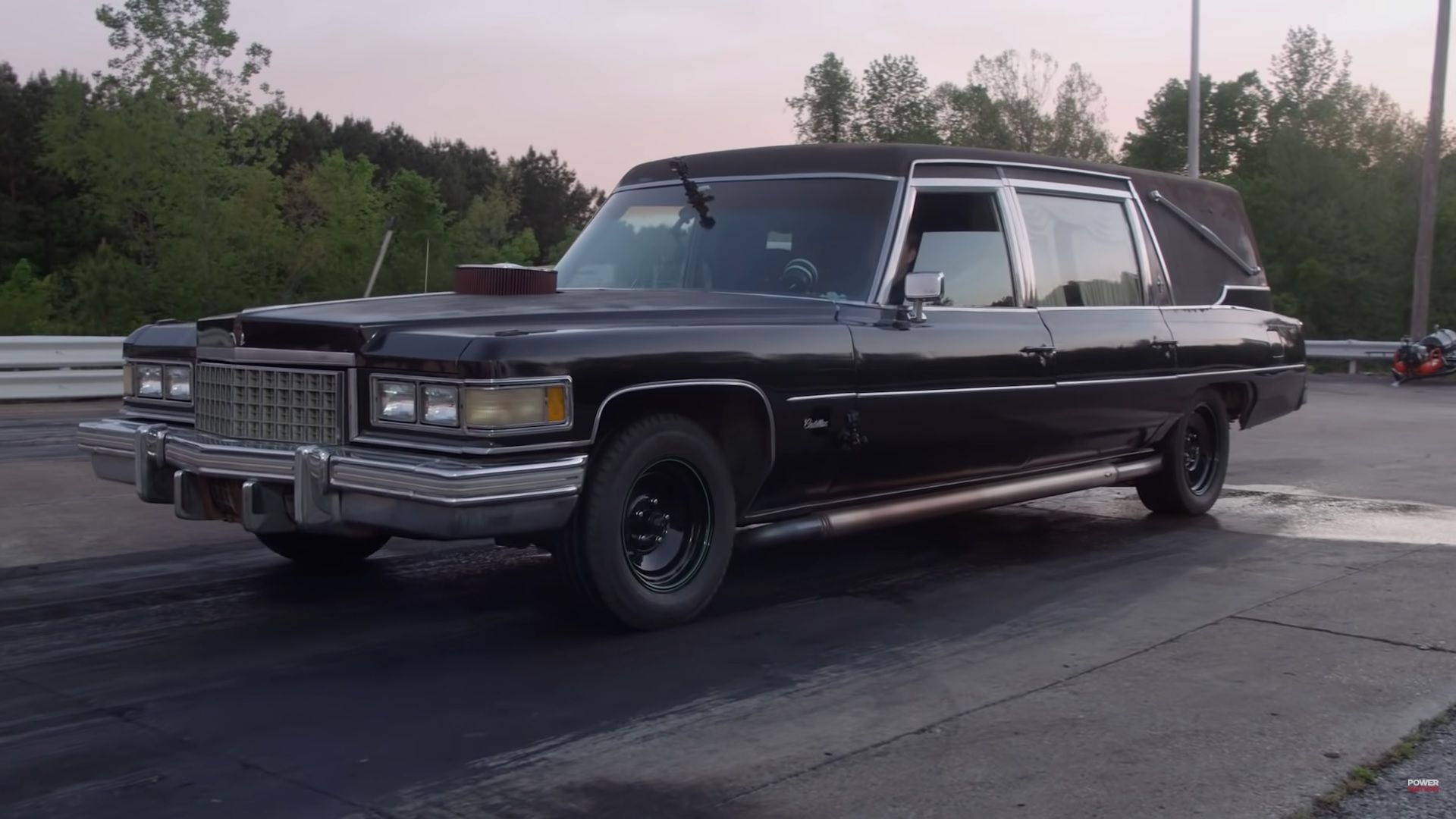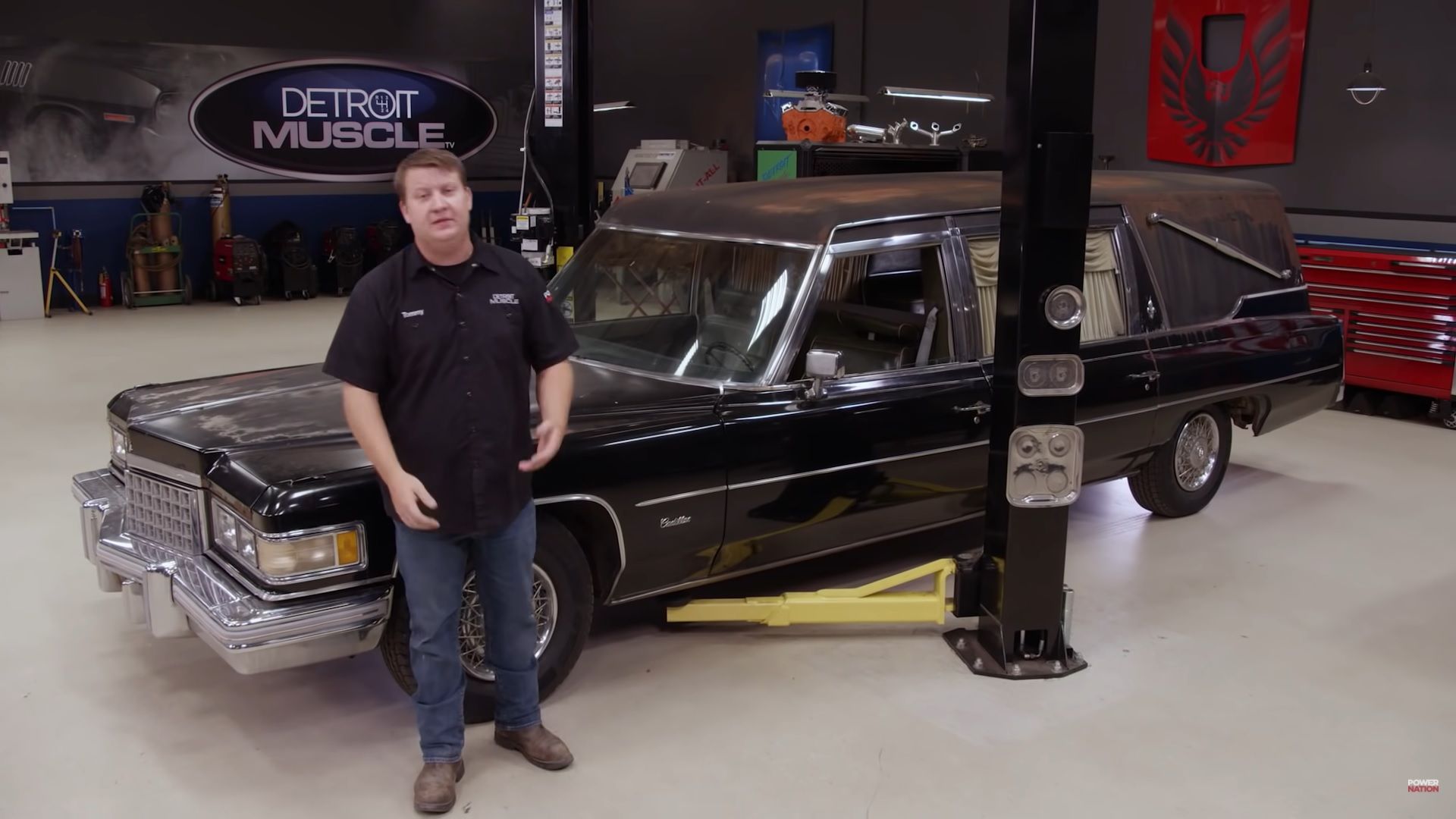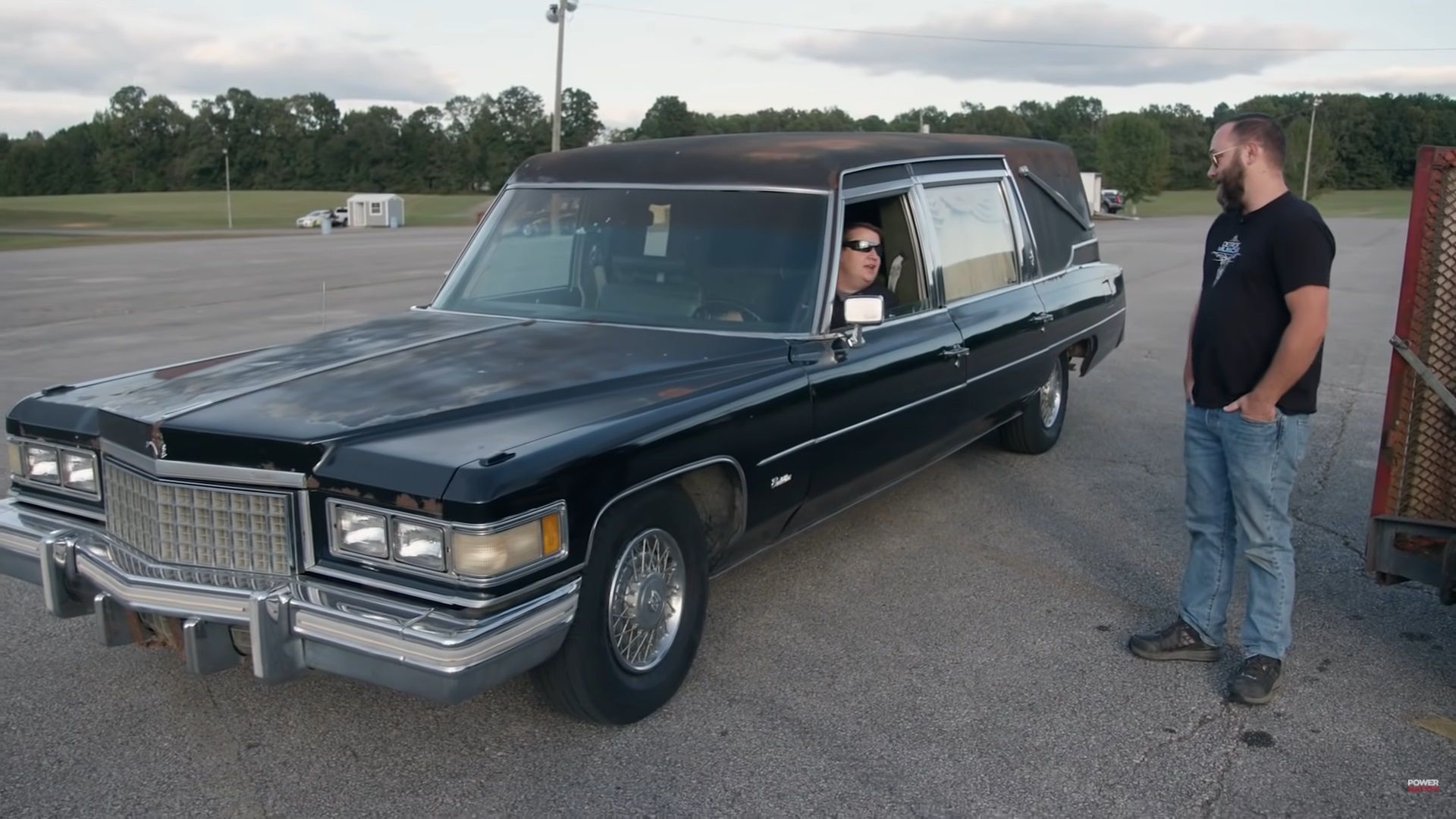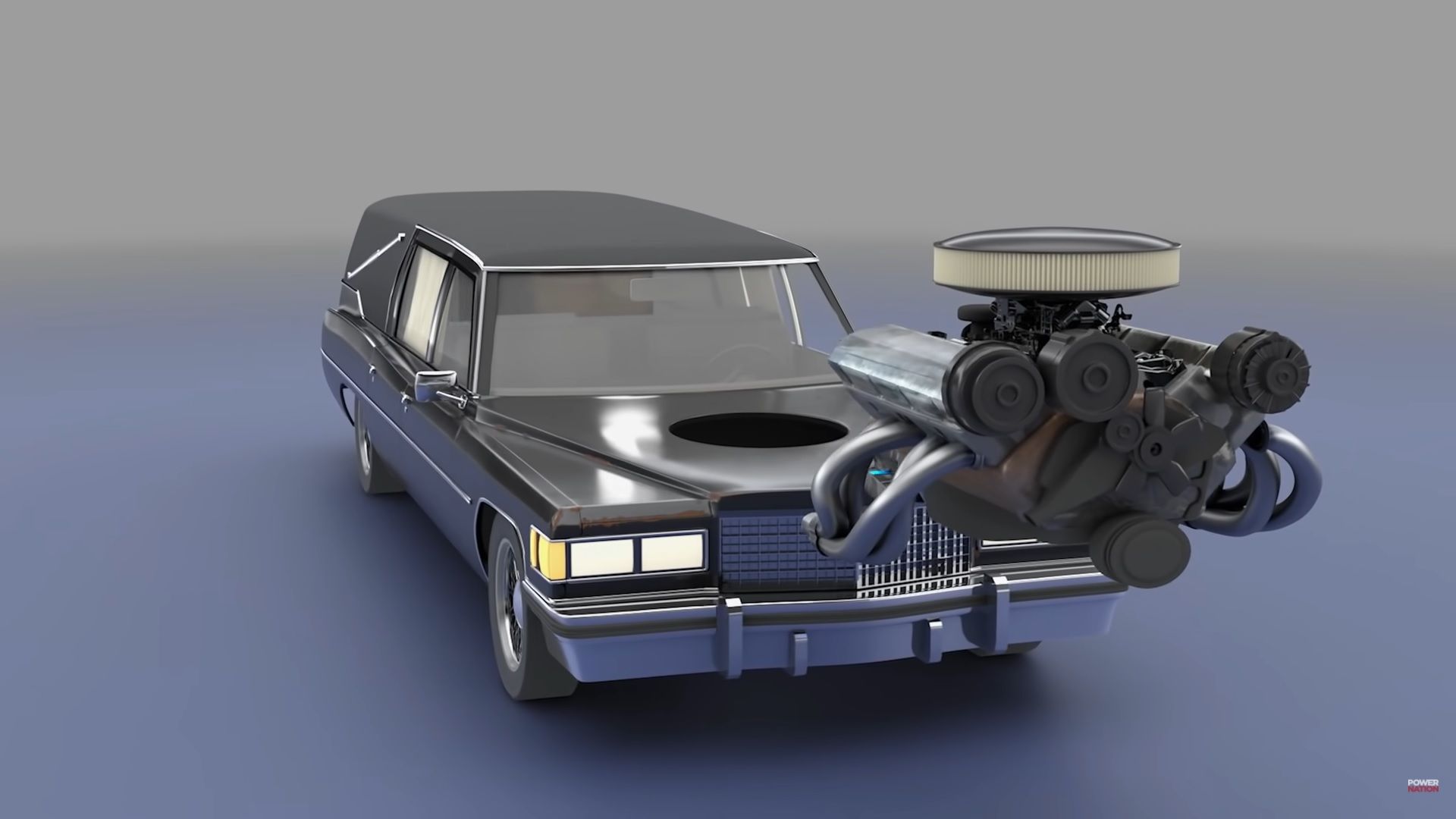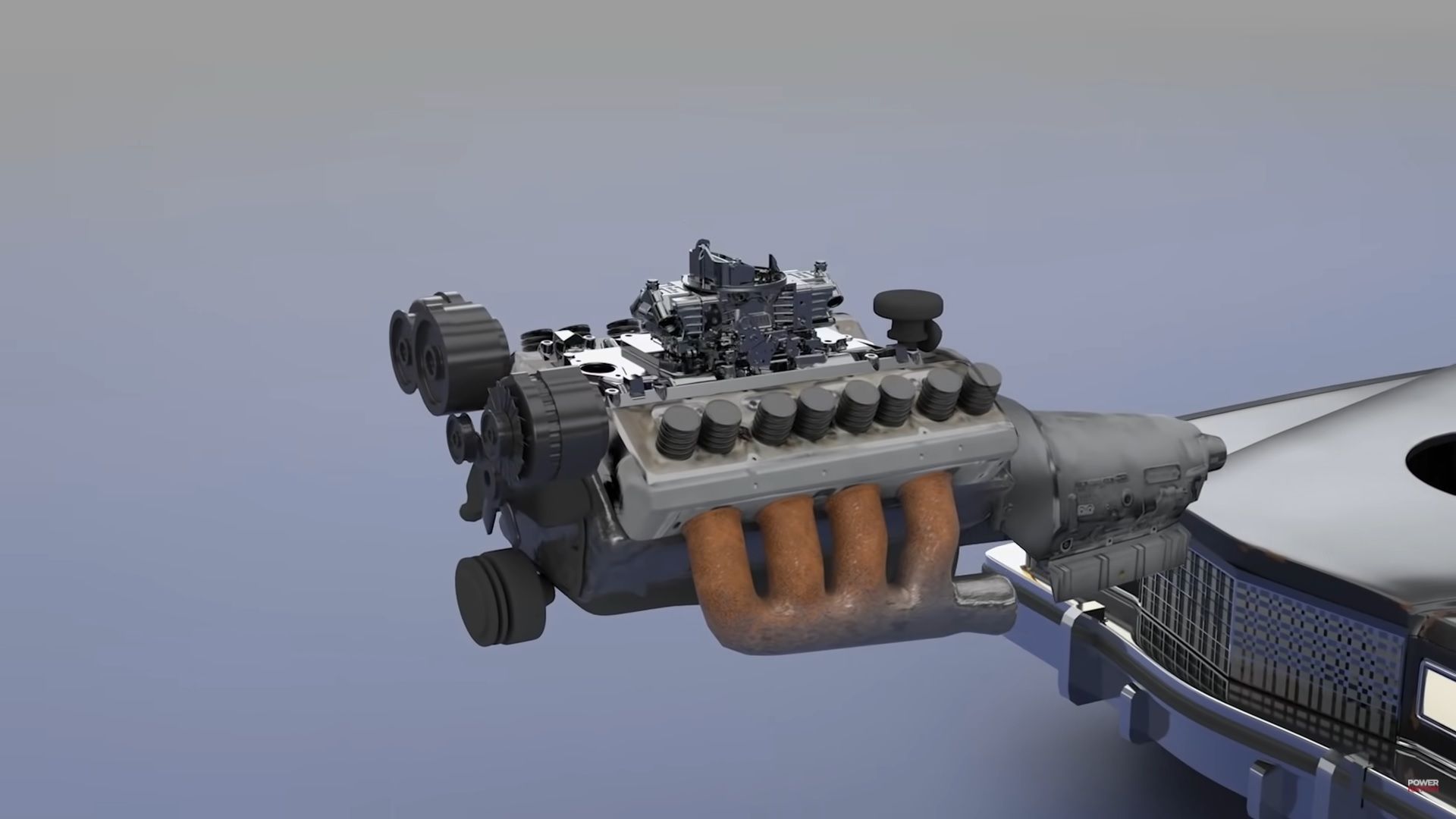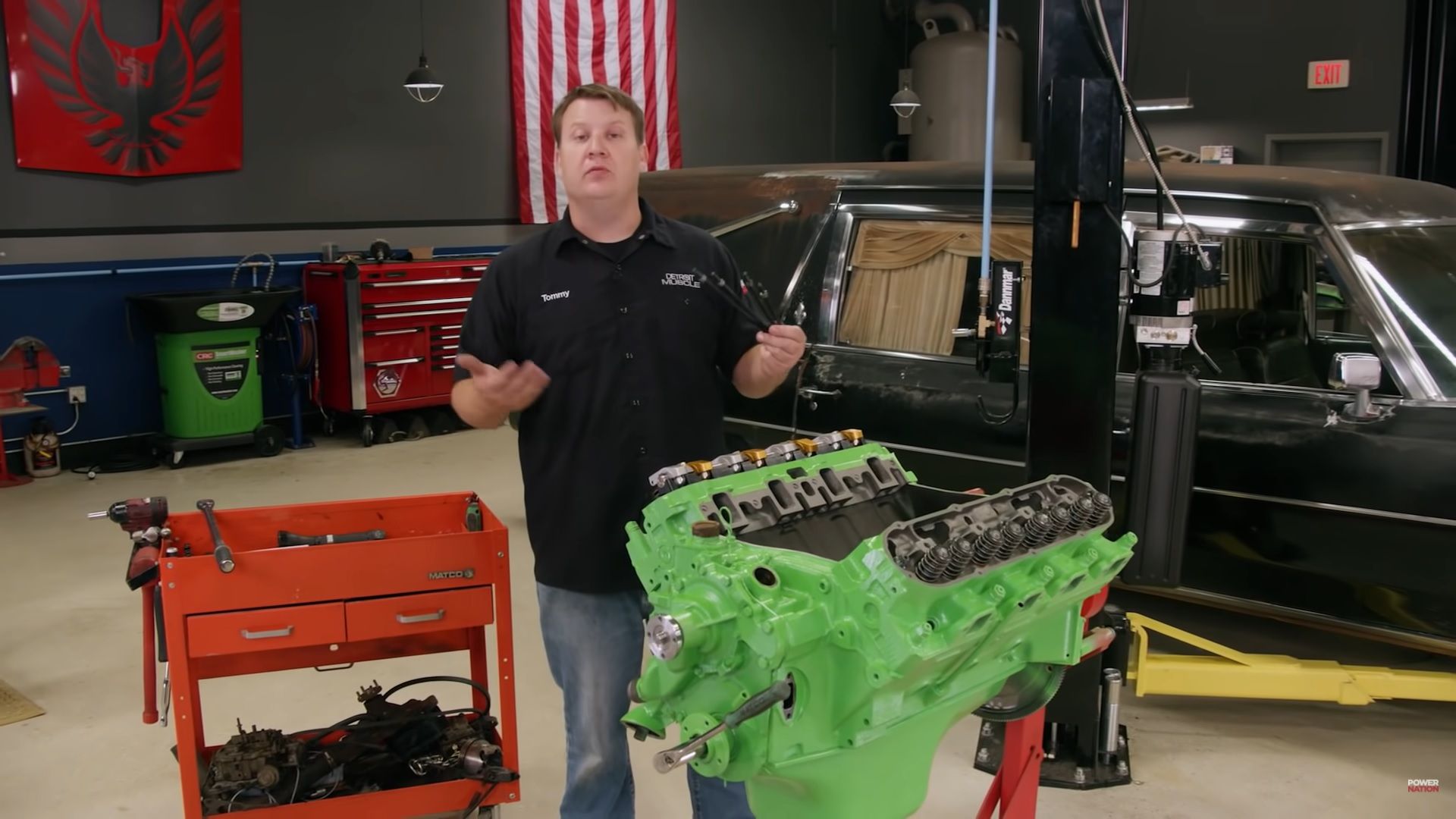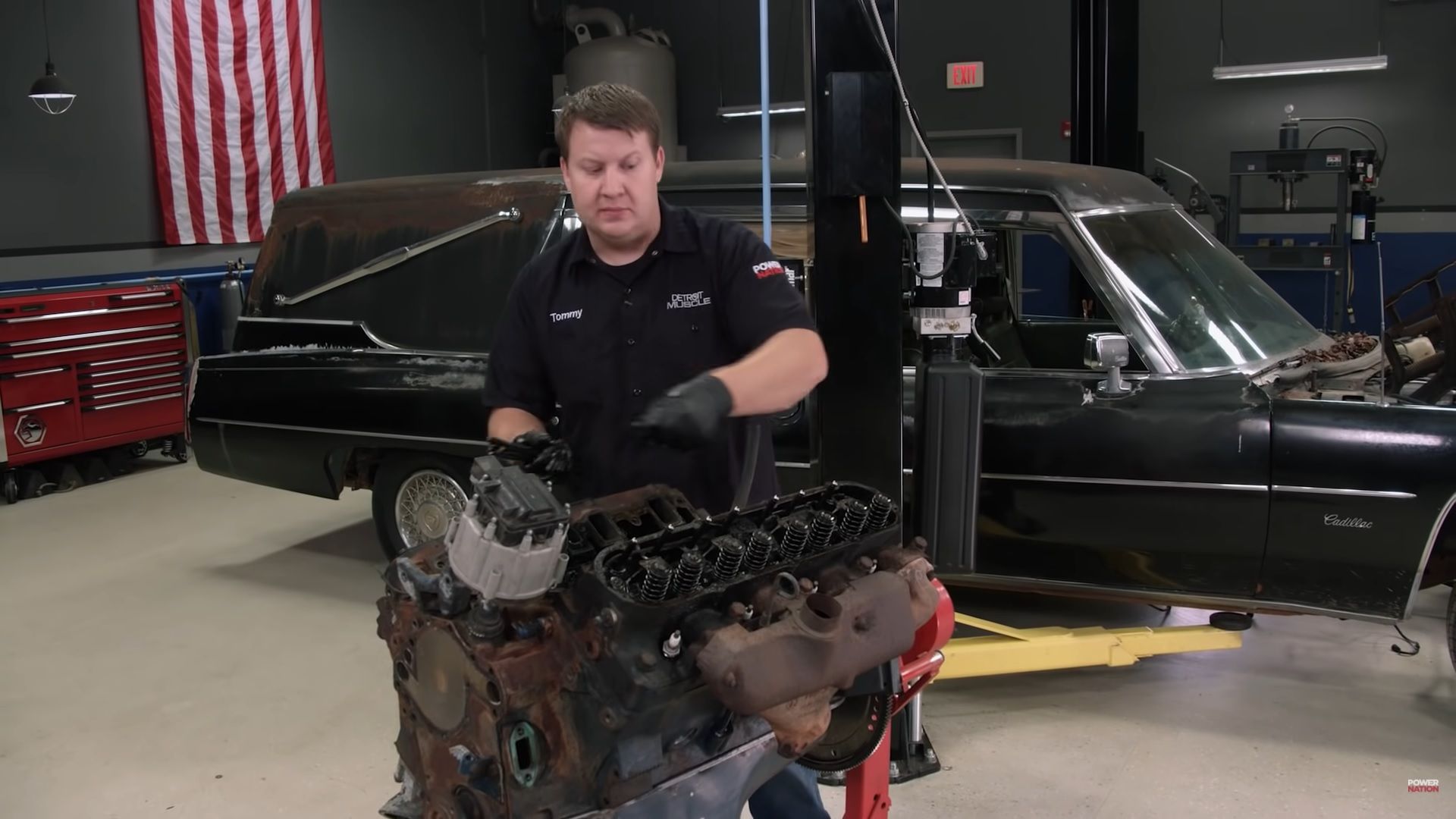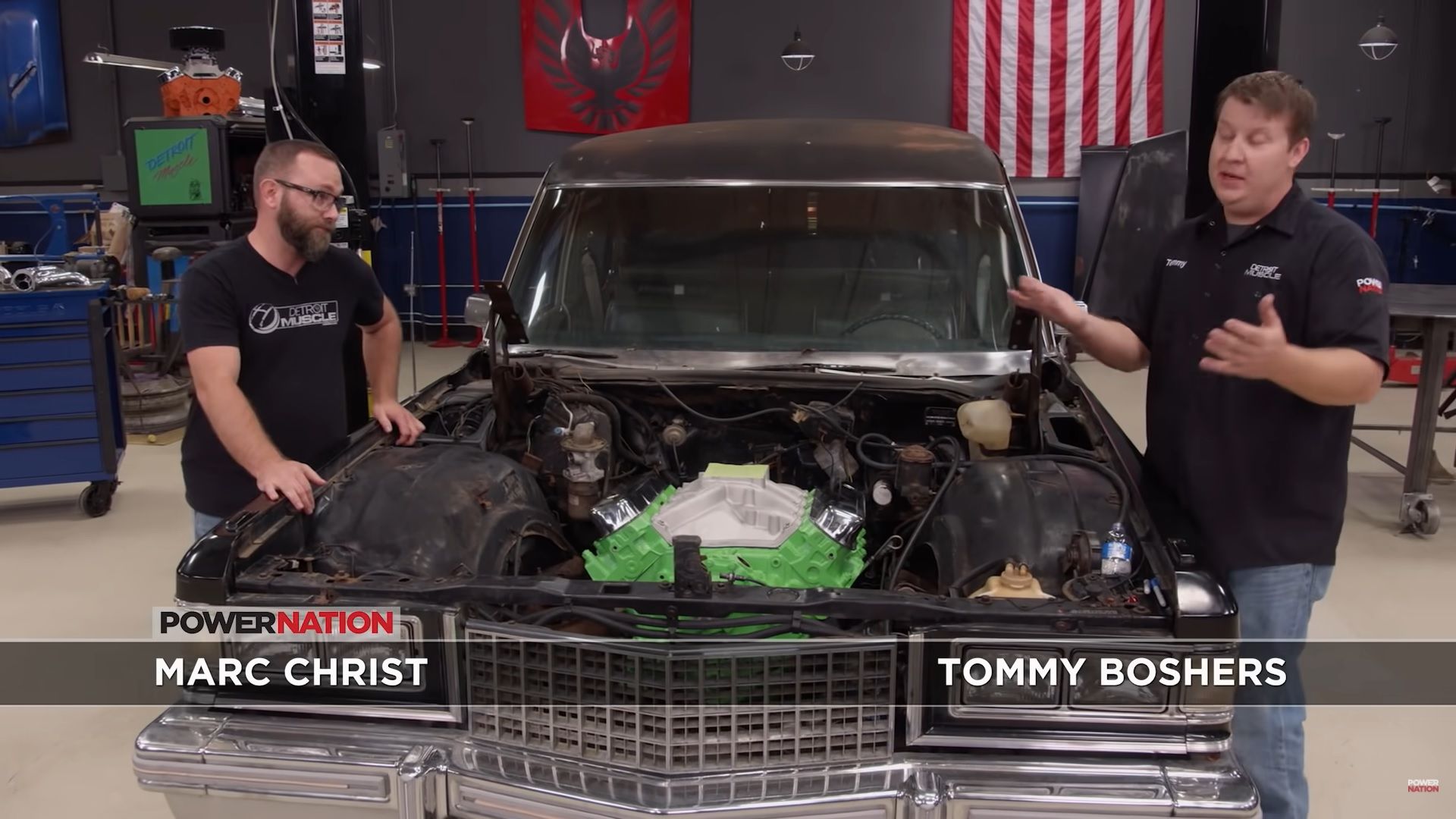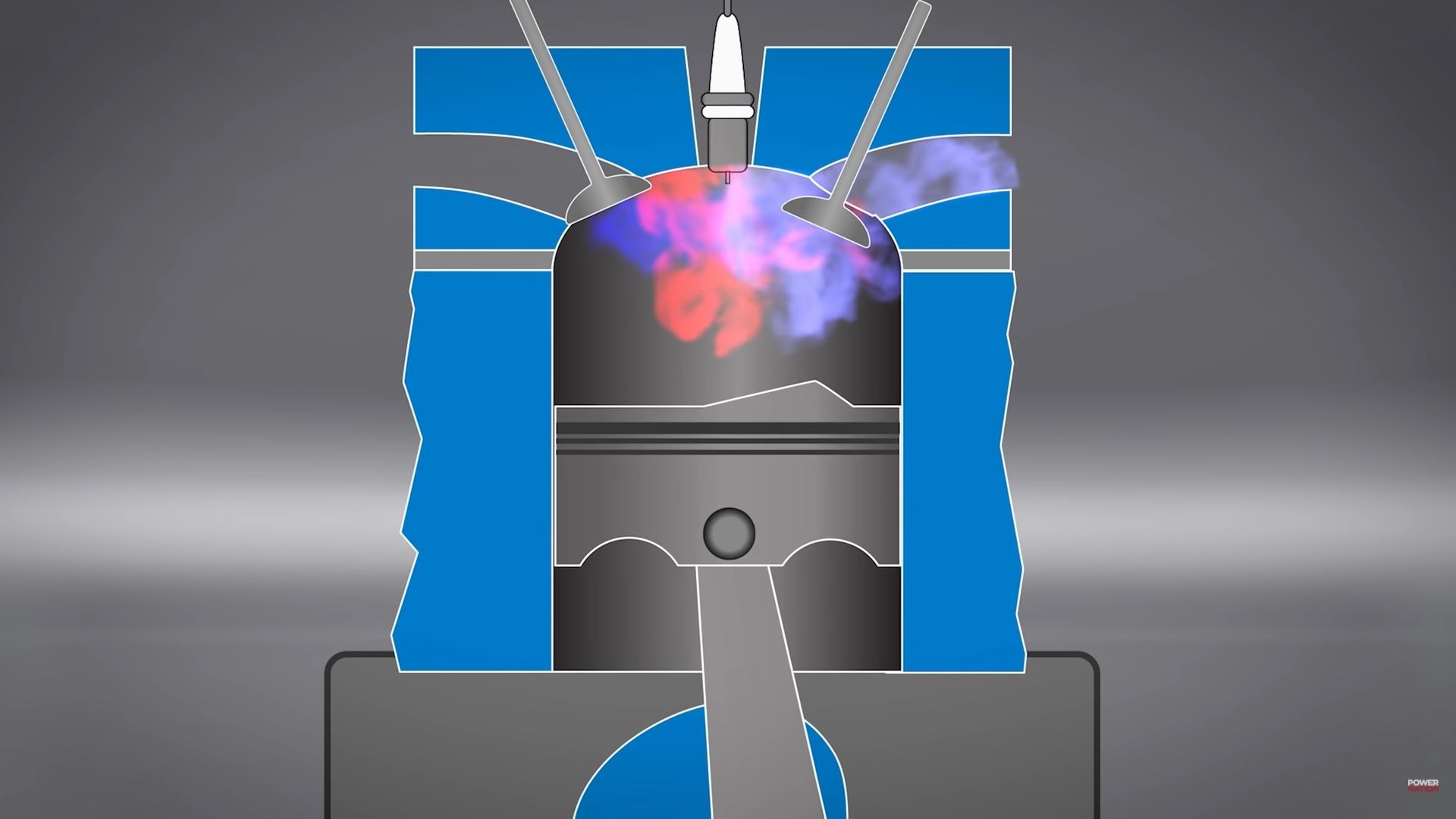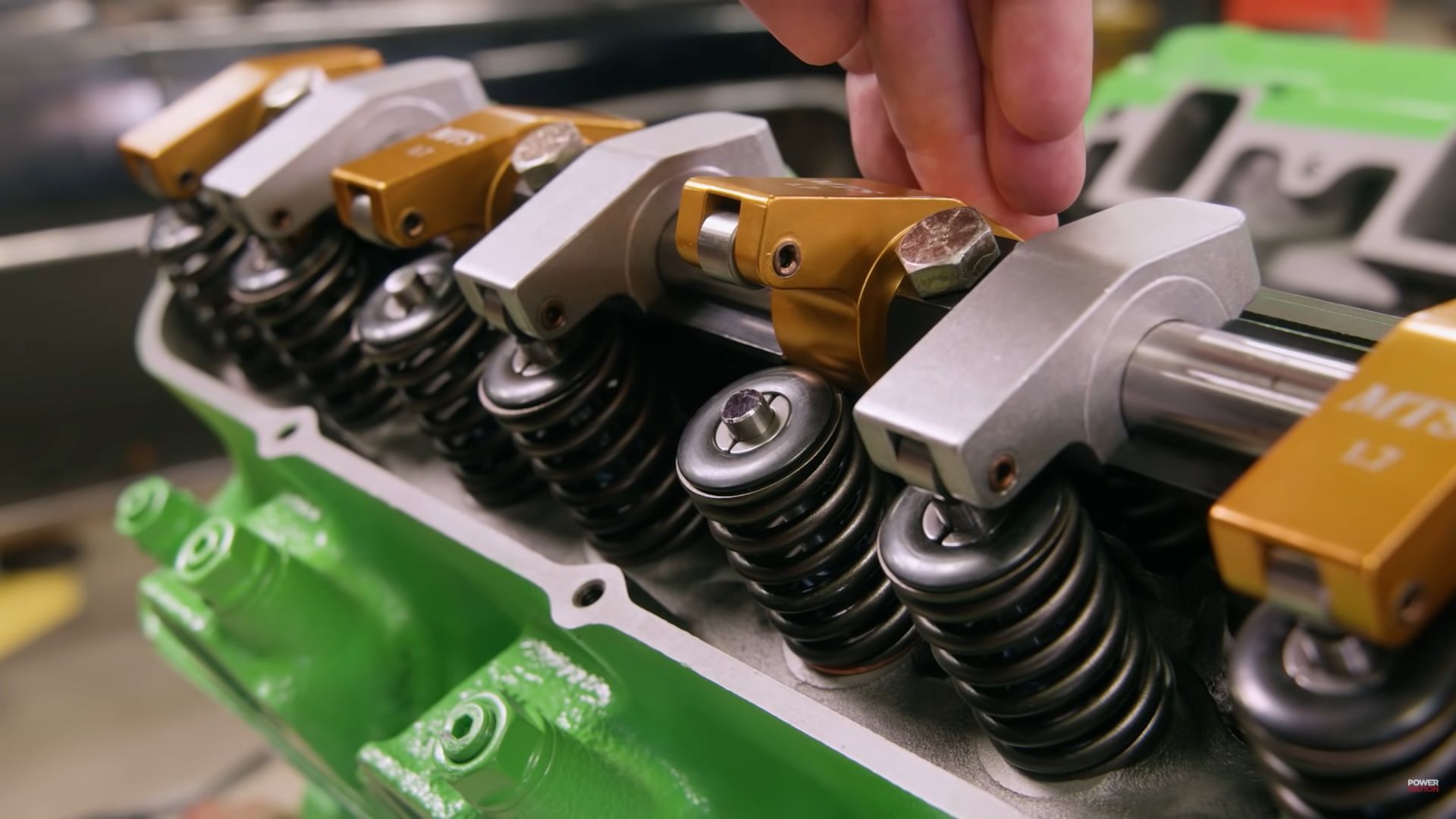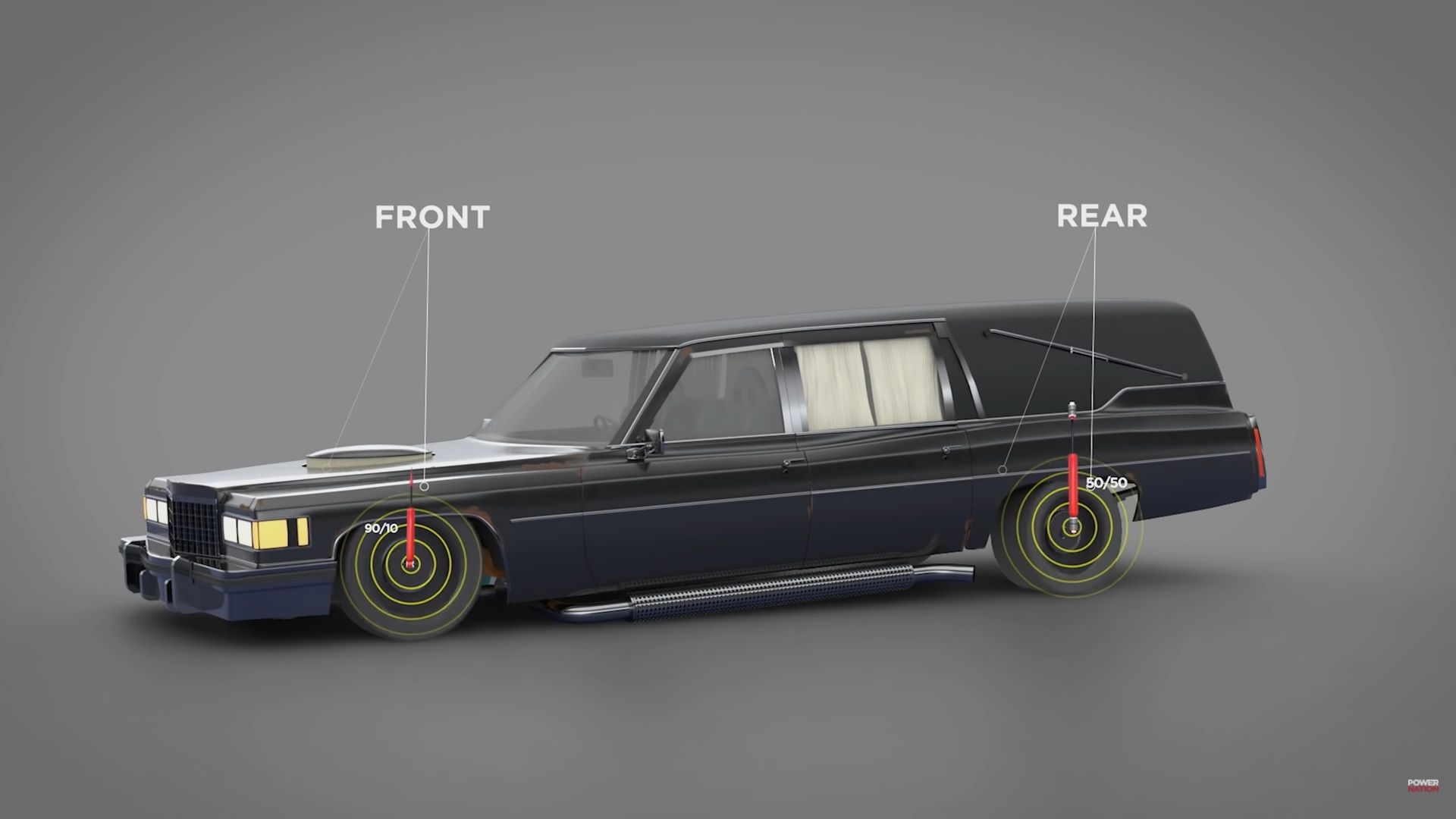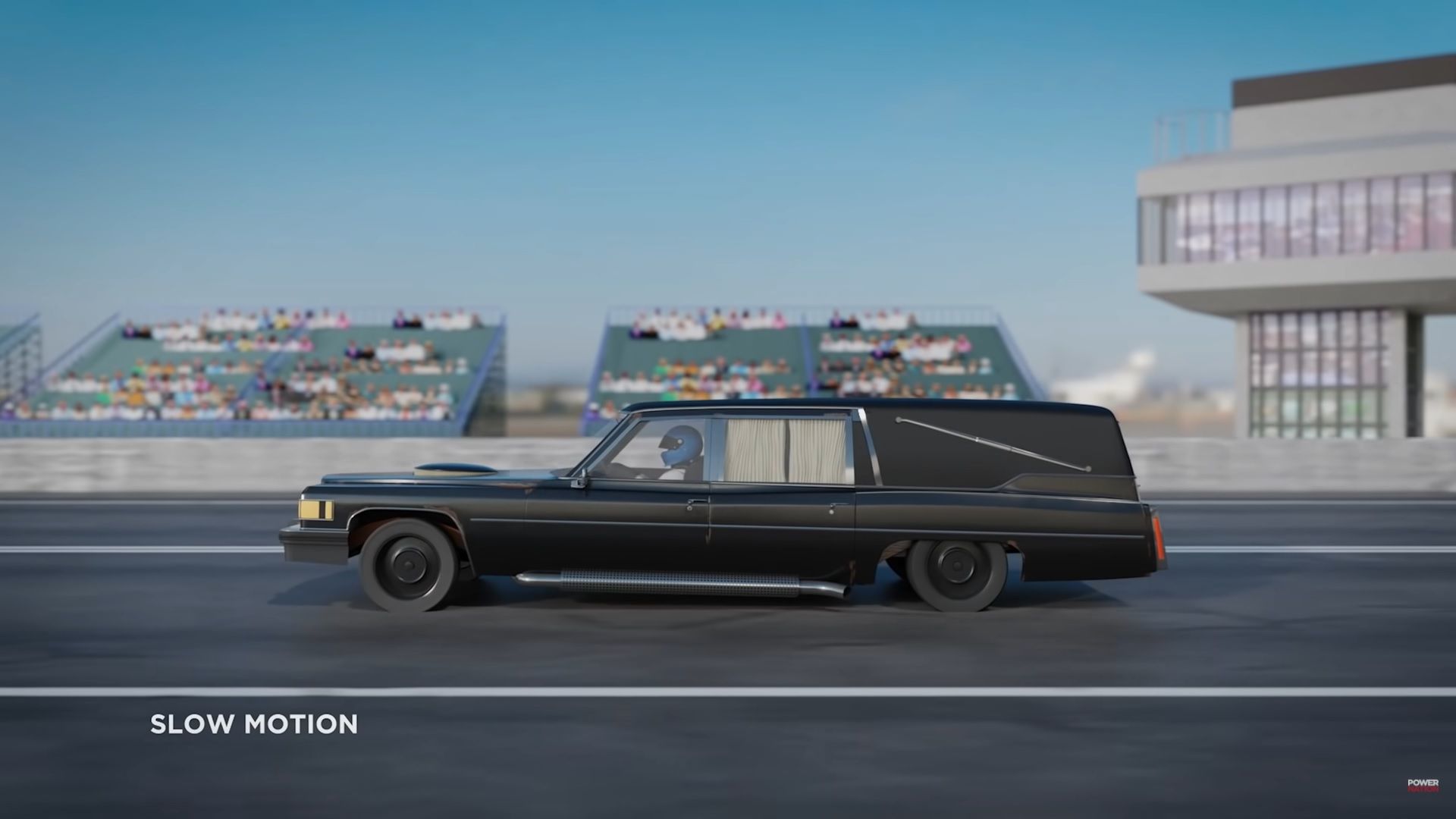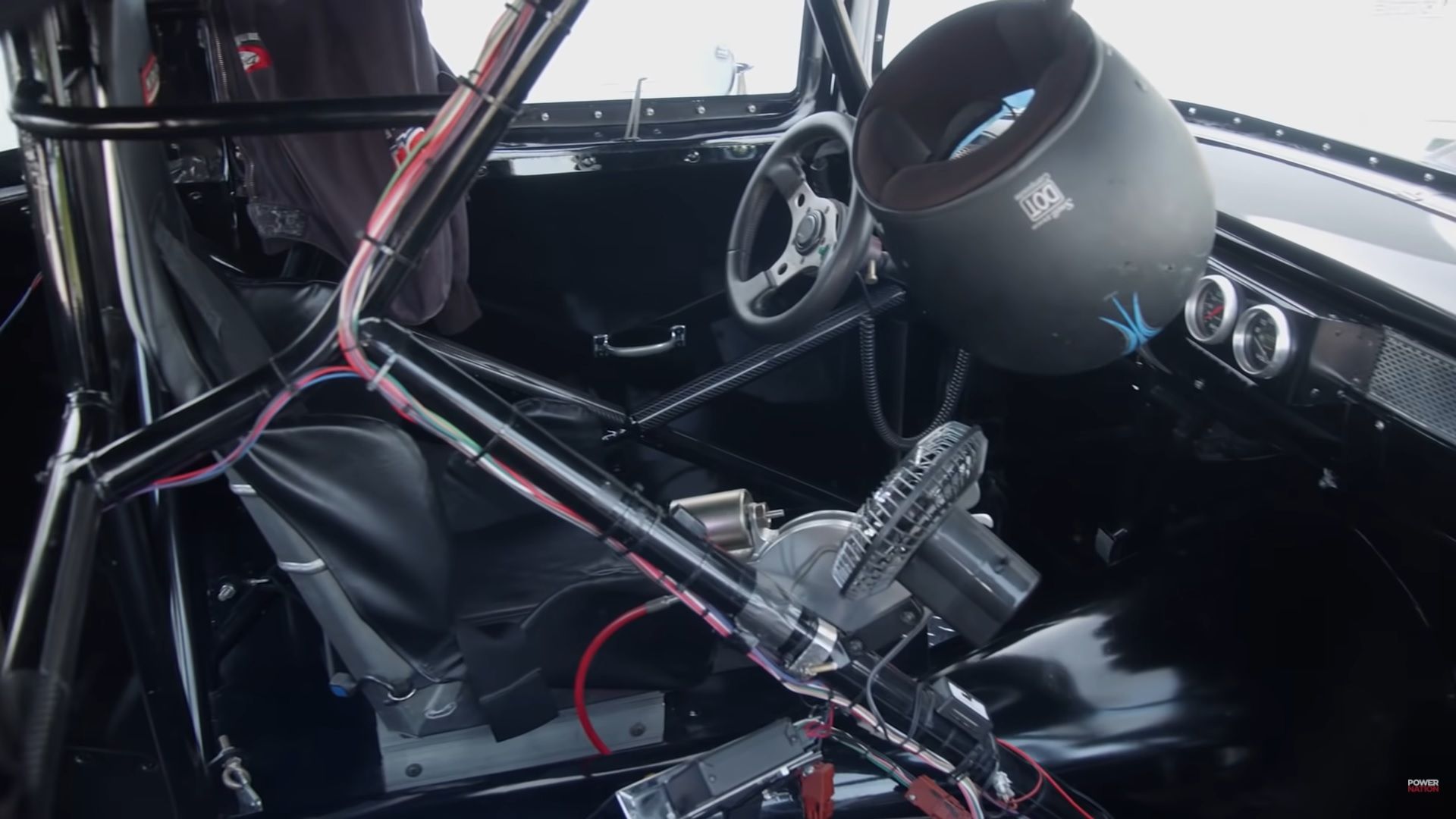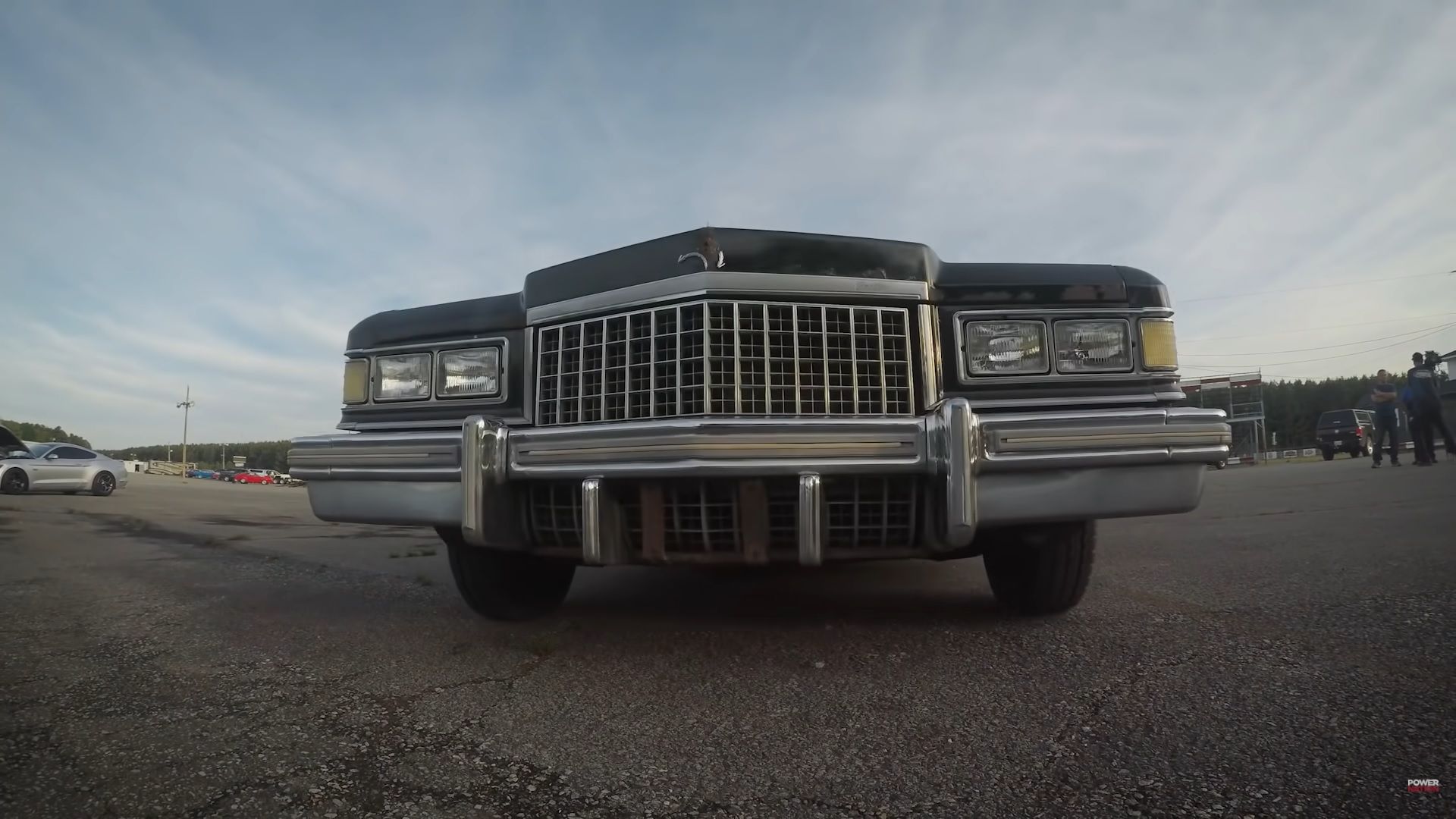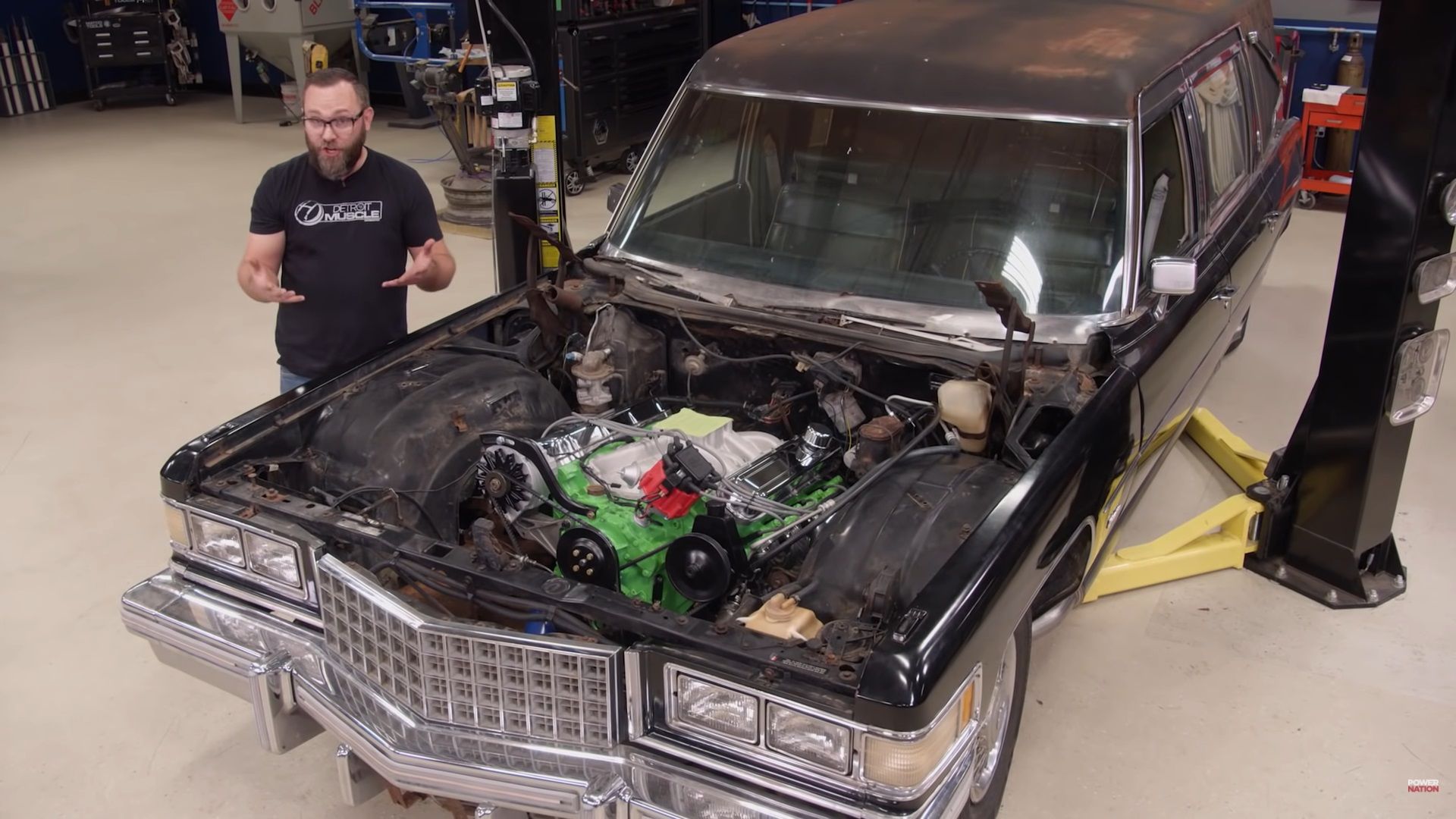Few cars out there look as sinister as a black, 1970s Cadillac Hearse. Apparently, the people at Detroit Muscle thought it would be a good idea to bring a neglected, 1976 example back from the dead. The YouTube video from "POWERNATION" is full of subtle black humor, as it resonates with the type of project, presented here. In case you don’t want to watch the full video, here are the biggest highlights of what would eventually become known as “the Overtaker”.
Tommy Boshers – POWERNATION host – was looking for a project that needed to be fun, have a big powerplant, since “there’s no replacement for displacement”, and “it needed to get noticed”. Usually, a 1969 Charger or a 1970 Chevelle are the most popular choices, if you are looking for straight-line speed in an old-school V-8 Muscle car. However, those can charge you a premium, as they are very sought-after.
The Starting Point
With that being said, Tommy has found something that “people are normally dying to take a ride in” – a 1976 Cadillac Hearse. This ride to the afterlife is based on the fourth-generation Cadillac Fleetwood and comes with an 8.2-liter Quadrajet (500 cubic-inch) V-8.
This being the heavily restricted era of US cars, the enormous big-block made only 190 horsepower and 360 pound-feet (488 Nm), while being mated to a Turbo 400, three-speed automatic. Not what you would call a performance recipe, especially with a curb weight of around 6,000 pounds (2,721 kg).
|
Engine |
8.2-liter Quadrajet (500 cubic-inch) V-8 |
|---|---|
|
Power |
190 HP |
|
Torque |
360 LB-FT |
|
Transmission |
Turbo 400, three-speed automatic |
|
Weight |
6,000 lbs |
Tommy notes that, since this isn’t a popular platform for builds, aftermarket support isn’t as plentiful. However, “there are a few items that you can put together, as kind of a secret recipe, and make this thing a powerhouse”.
Tommy describes the stock driving experience as that of a typical, old-school Cadillac – it’s a cruiser that you can just “lay back and drive in it” and “there’s even plenty of room to lie down in the back if you want to”.
The Stock Performance Is Surprisingly Good
Just for the fun of it, the Hearse is taken to the drag strip where it lays down a surprisingly good, all things considered, 12.7-second time for the eight-mile. That’s also with the air cleaner choking the life out of the engine. After removing it, the soon-to-become “Overtaker” manages an 11.7-second run.
The Goal
The goal is to build a car with 500 horsepower and 700 pound-feet (950 Nm), that’s going to be recognizable. The 500 cubic-inch V-8 behemoth is getting new heads, camshaft, intake, and carburetors, in order to “resurrect plenty of horsepower”. The engine modifications also include bigger exhaust headers and side pipes, which would make the “Overtaker” look like it rolled out from the depths of hell and give it a devilish soundtrack.
In addition, the old Turbo 400 automatic will get a new converter and a shift kit, in order to reduce clutch slippage and make the gearbox shift gears with more enthusiasm.
The stance is going to be enhanced by lowering the front and raising the back end, while the blacked-out wheels will be wrapped in drag radials at the rear.
The big Cadillac will also shed some “dead weight’, like the lofty couch that is the front seat. Instead, the Hearse will get proper bucket seats. Tommy says that, when it’s done, “Overtaker will grab the attention of your soul, regardless of your status or existence”.
All the original mechanicals need to be taken out. This includes the engine and gearbox, driveshaft, exhaust, and even the radiator, which has a mechanical fan, surrounded by a metal shroud, integrated into the core support of the car, which is getting cut off.
“I know a few of you guys aren’t into hearses, but you will be eventually”, Tommy jokes, as he moves on to address the Cadillac’s engine. The process starts by removing all the heavy accessories, such as the alternator, power steering, and air compressor, to name a few. Next up, 44 years' worth of grime and dirt is being scraped off the engine before it goes into the paint room for a fresh new coat.
Disassembling the pushrod V-8 is mostly simple, but Tommy notes that the lifter can be tricky to remove, due to gunk deposits at the bottom of the lifters. That said, it’s nothing a bit of solvent or lubricant can’t fix. After the intake, cam, lifters, distributor, and timing cover have been removed, it’s time for the upgrades.
John Walker – owner of JW Performance – is what Tommy calls a “Cadillac connoisseur” and he brought “a table full of goodies”. The main highlights are a set of 425 heads that have been blasted, cleaned and CNC ported, and features larger valve seats. You can also see the new valves that are originally meant for a 455 Pontiac, but work great for Cadillac, as well as new rocker-arm assemblies.
Last but not least the 500 cubic-inch V-8 gets a camshaft and timing set from Summit Racing, for more lift and duration. Once those are fitted, the crank hub is also installed, and with that, the 500 cubic-inch V-8 bottom end is dealt with.
The top end is fitted to the block with a set of APR studs. The next step is measuring for pushrod length, which Tommy Says is a good idea even for a stock engine, since milled heads or a decked block can mess with the length of the pushrod. We won’t be getting too technical (you can watch the video if you are planning to do a similar project), but “to do that, you need to bring the lifter that you are going to start adjusting with to base circle”, Boshers explains.
To get the intake lifter to where it’s needed, the engine needs to be rotated until the exhaust lifter “just starts to come up”. After this, the rocker-arm assemblies are being installed.
Putting The Power Down
If the “Overtaker” is to put the power down and set a blistering quarter-mile time, it needs the right rear end. Tommy scouts around a junkyard, until he finds a 9.75-inch rear end with 3.73 gears, from a 1990s Ford Expedition full-size SUV. The rear end also comes, as standard, with disc brakes, while the stock rear end of the 1976 Cadillac has drums.
Going back to the engine, it’s time for new exhaust headers, made by Sanderson. Meanwhile, Tommy is fabricating the dual side exhaust system out of piping provided by Magnaflow. Meanwhile, the hearse gets a new aluminum radiator, which only weighs a third of the original one’s mass, while being more efficient.
"Overtaker" Gets Even More Power
After installing the new fuel tank, the guys at Detroit Speed add the last performance upgrade. While forced induction is the way to go for massive horsepower gains, it can be pricey and complex to install, which is why the “Overtaker” gets nitrous. The wet shot of nitrous features a plate system from NOS that is “sandwiched” between the carburetor and manifold. This modification needs to be accompanied by a colder set of spark plugs, which is what the team installs.
Suspension Mods
The hearse needs to be a weapon on the drag strip and that involves the right suspension. In addition to the 9.75-inch rear end, the “Overtaker” gets a new set of shocks from Latewood Industry shocks, with a 90/10 setting at the front and a 50/50 setting at the back. The Caddie also gets Stage 5 EBC brake discs with Yellow stuff brake pads and Duralast brake calipers.
Black On Black
Tommy points out that finding matching wheels for an oddball build such as the Cadillac hearse could be difficult. Luckily, the solution came from Summit Racing, with a wheel design from their Rat Rod series. Surprisingly, they match the design of an old Ford F150 steel wheel design, which is what the Cadillac gets for the rear axle, after getting a gloss black finish of course. With this, "Overtaker" becomes fully blacked out.
Out Goes The Couch
Sadly, while the cozy couch is extremely comfortable, it does not provide any lateral support, which is what you need in a high-performance build. After cleaning the interior of any “gifts” that were left behind, Tommy installs a set of universal, racing seats, by Summit Racing, finished in black cloth. The final touches include a 10,000 RPM rev counter and a chain-themed, chrome steering wheel.
The Dyno Run
After being complete, the “Overtaker” is taken to the dyno, to lay down some impressive figures. However, on the first run, the blacked-out hearse only makes 258 horsepower and 323 pound-feet (438 Nm) at the rear wheels. After two more runs with nitrous on, the end result is 341 horsepower and 438 pound-feet (594 Nm). While far from the target figures, the team calls it a win, since the engine was never meant for high-performance applications.
On The Drag Strip
The guys at Detroit Speed decided not to bother with the quarter-mile just yet and, instead, went for the eight-mile. Without nitrous, the “Overtaker” managed a 10.47-second run. With nitrous on, “Overtaker” became a 9-second car as it managed 9.76 seconds…at the eight-mile. Not bad for nearly 6,000 pounds (2,721 kg) of steel.
Conclusion
Regardless of the rather underwhelming figures and the fact “Overtaker” didn’t actually overtake anyone, the guys at Detroit Muscle proved that you can, indeed, make a decently fast car out of pretty much anything, even without resorting to radical steps like engine swaps. Moreover, a 1970s Cadillac was never meant to do what this one did and whether you’re climbing the stairway to heaven or on the highway to hell, few cars will get you there in style, like this 1976 Cadilac Hearse.

